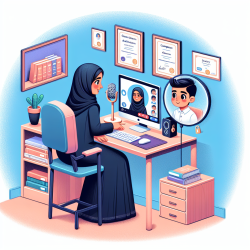Have you ever wondered why change in schools is often short-lived? Has your district started one initiative only to abandon it and start another one, without allowing time to see results?
Instead of thinking about change as a short-term fix, school personnel should think about building effective habits for long-lasting, sustainable change. School psychologists can promote these seven habits of highly effective schools starting today!
Habit 1: Know your school's bright spots and do more of what works.
Have you ever noticed a problem in your school and remembered that the school used to implement something effective to decrease the problem? Where did the practice go? Did people stop implementing it? Did an administrator stop reinforcing it? Now may be the time to bring it back. Alternatively, are some teachers currently doing something that is working for kids, and could more people follow that practice? Think about what is already working (bright spots) and find out how to do more of it.
Habit 2: Use a team approach with diverse representation.
A strong, high-functioning, diverse team can make practically anything happen in a school! Evaluate the teams in your school. Do they include members from diverse roles in your school? Do they include all the people who are involved in the issue? For example, if the team is focusing on wellness, include the school nurse and a physical education teacher. If the team is focusing on increasing reading scores for kids, include a teaching assistant who is supporting the interventions.
Habit 3: Implement effective meetings using agendas and action plans.
Research finds that more productive teams report a higher level of satisfaction, and, vice versa, more satisfied teams work harder! To help a team become more productive, be sure that you use a structured meeting process when you facilitate a team meeting and that you include an agenda and a time to review action items at the end. This applies to any kind of team meeting from problem-solving meetings to IEP meetings to school improvement teams. A good meeting requires a lot of advanced planning. Ask yourself these questions for every item on the agenda:
- What is the intended outcome of each agenda item (e.g., inform, brainstorm, decision)?
- Can we collect or share this information outside of a meeting (e.g., via email)?
- What additional information do the attendees need to inform any decisions they are making?
- What do the attendees need to do after the meeting is over?
Another tip is to implement a check-in at the beginning of the meeting and a check-out at the end. The check-in at the beginning allows participants to share if anything is getting in the way of paying attention (e.g., my relative is in the hospital, and I am waiting for a phone call.). The check-out at the end helps to prevent the "meeting after the meeting†and allows participants to share something that is on their mind or to just share a positive response to the meeting!
Habit 4: Compare the problem to what is expected using data (problem identification) and Habit 5: Dig deep into the problem to better understand barriers (problem analysis).
Use data the same way you would to better understand a student problem. If administrators are concerned about too many behavioral referrals, ask them how many referrals are expected. Asking the question "What is expected?†anytime someone shares a systems problem helps to understand the severity of the problem or to determine if it is a problem at all. Then, use data to better understand what is going on. If a team thinks students are unmotivated, survey the students and use the data to inform your intervention decisions. If parents think a curriculum is not working, collect data on the implementation. Observe classrooms to see if the curriculum is being used and then use an integrity checklist to see if it is being implemented as intended.
Habit 6: Create implementation guides for interventions to communicate what is expected.
When implementing a new intervention, it's important to create a clear implementation guide. This guide should outline the steps involved in the intervention. It can be as simple as developing a checklist for what should be happening. Getting this on paper can go a long way in promoting consistent implementation of interventions by different individuals.
Habit 7: Continuously evaluate program implementation and use data to make improvements to the program (data-based decision making).
Implementing a program should go hand in hand with evaluating the program. Use continuous plan implementation and evaluation (PIE). Using data to build school-wide habits can be second nature for school psychologists, and you can help others see the value of data in effective school-wide habits.
Which habit can you promote in your school today?
For more information, please follow this link.










